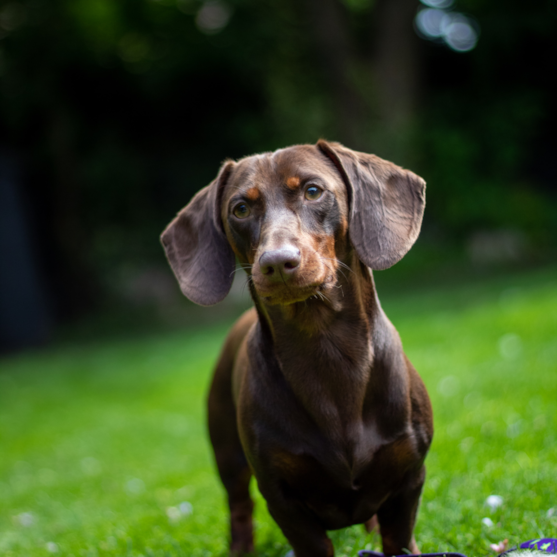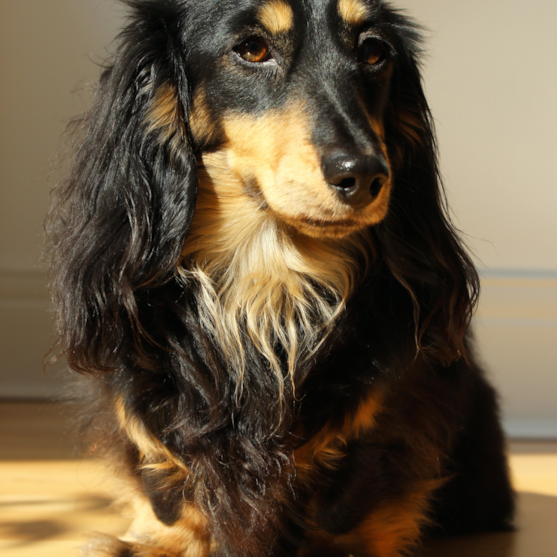Simply Southern Pups > Dog Breeds > Dachshund
Dachshund Breed Info


Embark on a journey to explore the Dachshund, a small yet courageous breed that has stolen the hearts of dog lovers worldwide. With their roots in hunting, Dachshunds have proven themselves as fearless, intelligent, and resourceful dogs. They are now cherished family pets, known for their unwavering devotion and engaging personalities. Whether you prefer a smooth, wirehaired, or longhaired coat, or a standard or miniature size, the diverse Dachshund is sure to make a lasting impression.
BREED TYPE / MIX
ENERGY
SHEDDING
TRAINING
TEMPERAMENT
ADULT WEIGHT
ADULT HEIGHT
LIFE SPAN
Characteristics
- Dachshunds demonstrate remarkable courage, often displaying an unexpected level of bravery for a small breed.
- These dogs are deeply dedicated to their owners, offering steadfast companionship and loyalty.
- Dachshunds are known for their vivacious and animated personalities, bringing joy and amusement to their families.
- Their notable intelligence can sometimes lead to challenges in training if not handled with proper guidance and patience.
- Dachshunds have a strong-willed nature, often necessitating a consistent and understanding approach during training.
- This breed is renowned for its tender and loving nature, creating powerful emotional bonds with its family members.
- Dachshunds possess a keen awareness of their surroundings and make excellent watchdogs, always ready to inform their owners of any unusual occurrences.
- They have the ability to flourish in various living environments, making them a fitting choice for a diverse range of households.

Appearance
One cannot talk about Dachshunds without mentioning their characteristic long body and short legs. This breed's unique structure stems from its history as a hunting dog, bred to navigate narrow tunnels in pursuit of small prey.
Dachshunds come in two sizes: Standard and Miniature, offering choices for different households. Furthermore, they also feature three coat types, namely smooth, wirehaired, and longhaired, providing even more variety to their appearance.
The Dachshund breed exhibits an impressive array of colors and patterns, such as solid shades, dapple, brindle, and piebald designs. This vast selection ensures that there is a Dachshund for every individual's taste.
Dachshunds, with their unique body structure, various coat types, sizes, and wide range of colors and patterns, have become a beloved breed worldwide. The unmistakable look of these endearing dogs continues to charm pet owners and admirers alike.
Temperament
Dachshunds are known for their unique and charming temperament. They have several key personality traits that make them beloved companions for many people.
Firstly, dachshunds are naturally curious and love to play. They have high energy levels and enjoy chasing after toys or playing games with their owners. This playfulness is a defining characteristic of the breed and can make them great companions for families with children.
However, dachshunds can also be quite stubborn at times. While they are intelligent dogs, their independent streak can make them more difficult to train than some other breeds. It's important to use positive reinforcement and patience when training a dachshund.
Despite their independent nature, dachshunds are fiercely loyal to their families. They are known for being protective of their loved ones and will bark to alert their family of any perceived threats. Additionally, they are very affectionate and love to cuddle and be close to their owners.
Dachshunds are also known for their bravery and confidence. Originally bred to hunt badgers, they needed to be fearless and determined in order to do their job effectively. This trait has carried over to modern-day dachshunds, who are often described as brave and tenacious.
Care
Grooming
With their elongated bodies, short legs, and expressive eyes, Dachshunds have a distinctive look that sets them apart from other breeds. Their variety of sizes, coat types, colors, and patterns further add to their charm and allure, making them a beloved choice for pet owners.
To maintain their coat's health and beauty, Dachshunds require regular brushing. Smooth-coated Dachshunds need weekly brushing with a soft-bristle brush or grooming mitt, wirehaired Dachshunds require twice-weekly brushing with a slicker brush or comb, and longhaired Dachshunds should be brushed daily using a pin brush or comb to prevent tangles.
Additional Grooming Needs:
- Dental Care: Regular teeth brushing helps prevent gum disease, plaque buildup, and bad breath, contributing to your Dachshund's overall health and well-being.
- Bathing: Occasional baths using a gentle dog shampoo will keep your Dachshund's coat clean and fresh. Ensure the water is lukewarm and rinse thoroughly to avoid skin irritation.
- Ear Cleaning: Regular ear cleaning is vital for Dachshunds, as their floppy ears can be prone to infections. Use a veterinarian-recommended ear cleaner and cotton balls or gauze to gently clean the outer ear.
- Nail Trimming: Keep your Dachshund's nails trimmed regularly to prevent discomfort and potential injury. If you're unsure about trimming your dog's nails yourself, seek professional help from a groomer or vet.
Exercise Needs
Ensuring that your Dachshund receives the proper amount of exercise is crucial for their overall health and happiness. Here are some suggestions for you to consider when it comes to keeping your Dachshund active and engaged:
Understand their background: Dachshunds were initially bred for hunting, which means they have a natural inclination for physical activities. Keeping this in mind will help you tailor their exercise routine to suit their inherent energy levels.
Diversify their activities: To keep your Dachshund engaged and motivated, introduce a variety of exercises into their routine. You might consider activities such as dog sports (agility or nosework), short hiking trips, or nature walks. These activities not only provide physical exercise but also mental stimulation.
Consistency is key: Aim to provide your Dachshund with at least 30 minutes of physical activity per day. This can be divided into shorter sessions if necessary. A consistent exercise routine helps maintain their physical health, mental well-being, and prevents boredom.
Incorporate training sessions: Regular training sessions can serve as a form of exercise while also reinforcing good behavior and strengthening the bond between you and your Dachshund. These sessions offer both mental and physical stimulation and contribute to their overall well-being.
Mind their unique physique: Dachshunds have a distinctive body structure that makes them prone to spinal issues. While planning their exercise routine, focus on low-impact activities and avoid any exercises that involve excessive jumping or sudden twists.
Health
Dachshunds, like any other dog breed, have specific health considerations that owners should be aware of to ensure their well-being. Due to their elongated spine and short legs, Dachshunds are particularly susceptible to intervertebral disc disease (IVDD), which can cause pain, nerve damage, or even paralysis. Regular veterinary check-ups and maintaining a healthy weight are essential in mitigating the risk of IVDD.
Additionally, Dachshunds may be prone to obesity, which can exacerbate spinal issues and contribute to other health problems such as diabetes and heart disease. To keep your Dachshund healthy, provide them with a balanced diet, regular exercise, and routine dental care. Monitoring your Dachshund for any signs of discomfort or changes in behavior can help detect potential health issues early, allowing for prompt veterinary attention and treatment.
Lifespan
Dachshunds are a breed that comes in a variety of sizes, and their lifespan can vary depending on their size. Generally, smaller dogs tend to live longer than larger dogs, and this is true for Dachshunds as well. Miniature Dachshunds, for example, can live up to 14-17 years on average, while standard Dachshunds have a lifespan of 12-15 years.
However, genetics, diet, exercise, and overall health care are also important factors that can influence their lifespan. Providing your Dachshund with a nutritious diet, regular exercise, and consistent veterinary care can help ensure that they remain healthy and happy throughout their lives.
Training
Training a Dachshund requires patience, consistency, and dedication. This breed requires basic obedience training to ensure they are well-behaved and easy to manage. Some of the essential commands to teach them include "sit," "stay," and "come."
Socialization is also a critical aspect of training a Dachshund. They are naturally suspicious of strangers, so it's important to expose them to different people and environments from a young age. This can help them become well-adjusted and comfortable in a variety of situations.
Leash training is another essential component of their training. Dachshunds have a strong prey drive, and they may be tempted to chase after squirrels, birds, or other small animals. Training them to walk calmly on a leash can help prevent this behavior and keep them safe.
Positive reinforcement is one of the most effective training methods for Dachshunds. Praising and rewarding good behavior can help encourage them to repeat that behavior. Being consistent with rules and boundaries can also help establish expectations and ensure your Dachshund understands what is expected of them.
History
Dachshunds, also known as "wiener dogs," are a breed of small, long-bodied hounds originally bred in Germany over 500 years ago.
The dachshund's origins can be traced back to the 15th century, when German hunters needed a dog that could hunt badgers and other small game. They bred a mix of different hound breeds to create a dog with a long body and short legs, which would allow it to dig into burrows and tunnels to flush out prey.
The word "dachshund" itself comes from the German words "dachs," meaning badger, and "hund," meaning dog. The breed was officially recognized by the German Kennel Club in 1879, and quickly gained popularity not just as a hunting dog, but also as a companion.
Dachshunds were brought to the United States in the late 1800s, and quickly became popular as well. They were recognized by the American Kennel Club in 1885 and have been a beloved breed ever since.
During World War I, dachshunds fell out of favor in the United States due to anti-German sentiment, but their popularity rebounded after the war ended. They were even featured in advertising campaigns for brands such as Oscar Mayer, which used a dachshund in its "wienermobile" promotional vehicle.
Today, dachshunds are still popular as both hunting dogs and pets. They come in a variety of colors and coat types, including smooth, wirehaired, and longhaired. They are known for their loyalty, intelligence, and playful personalities, and make great companions for families and individuals alike.


